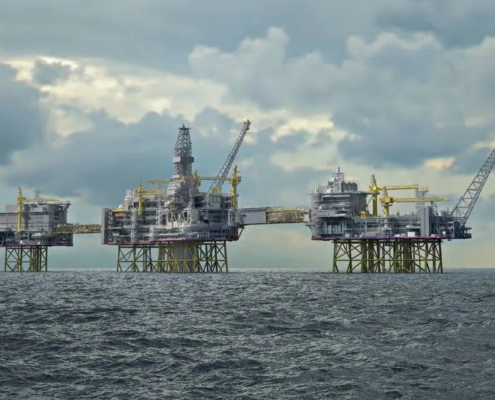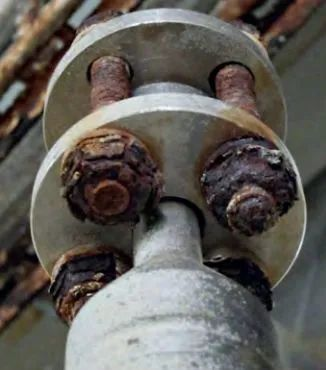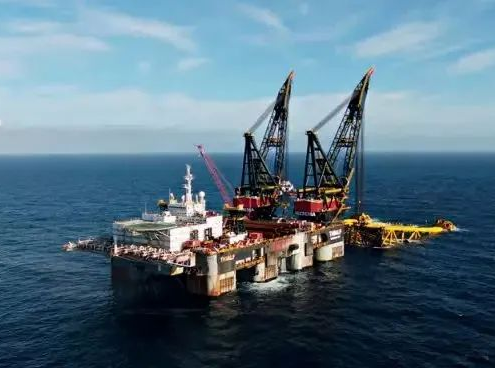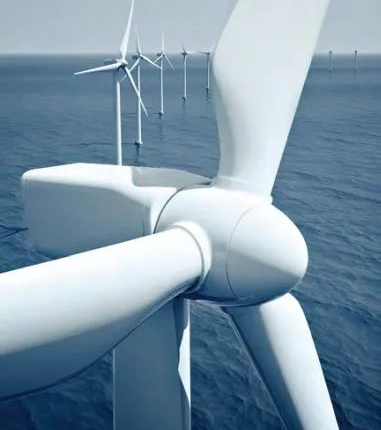Duplex stainless steel makes offshore oil and gas platforms lighter and safer
The environment in which offshore oil and gas platforms are located represents some of the most demanding environmental conditions for the materials they are built from. Offshore platforms must be able to operate safely for decades under the impact of extreme weather and high winds and waves. The most challenging locations are in and around the Arctic Ocean, where recurring storms further exacerbate the extremely corrosive nature of the environment. Under these harsh conditions, molybdenum-containing alloy materials, especially duplex and super duplex stainless steels, last longer than any other material. A small but critical component is the super duplex stainless steel bolt.
Offshore platforms are used to extract and process oil and gas resources from the seabed, and they are equivalent to an offshore chemical plant. Offshore platforms are equipped with a full set of self-sufficient equipment including power generation, desalination, living facilities, etc., and all equipment sizes to be as compressed as possible, occupying the minimum space. In order to reduce the size of the support and anchoring devices, the weight of the platform is also to be minimized. In addition to the oil and gas extraction and processing equipment, miles of pipelines are required to transport oil and gas on the platform. The pipelines are connected by flanges, requiring the use of a large number of bolts, whereas in the past bolts of hot-dipped galvanized steel were used.
Material selection for oil platforms
Statoil, a Norwegian oil company, is developing the Johan Sverdrup field on the Norwegian continental shelf. It is one of the largest fields discovered in the area in recent years and by 2022, when the second phase is fully completed, the field will be the largest oil producer in the North Sea. The long life expectancy of the field, 50 years, and the requirement for a lightweight and compact platform have set high standards for the selection of platform components, equipment, and piping.

The company’s experience in other North Sea fields has shown that conventional bolts are subject to severe corrosion and that hot-dipped galvanized steel fasteners have a limited service life. The life span of the galvanized protective coating is generally 8-10 years, beyond which the steel fasteners themselves corrode. Therefore, the total life of such fasteners in the marine environment is only 15 years. And only intact fasteners can ensure the safe and reliable operation of the huge and complex piping system of the offshore platform and ensure the safety of the marine assurance environment, the importance of fasteners is indisputable.

Due to the extreme importance of fasteners, and the effective life of older offshore platforms, as technology advances and oil extraction levels increase, thousands of fasteners must be replaced when they reach the end of their service life.
The replacement task is onerous, the investment is huge and the normal operation of the platform is affected. To avoid similar problems in the future, Statoil replaced all the hot-dipped galvanized bolts on the old platform with super duplex stainless steel bolts.
The Johan Sverdrup project was designed for a 50-year life and it was specified from the start. The economical duplex stainless steel selected was used for various structural components such as cable bridges, pipe supports, and other secondary components in non-high-temperature environments. The advantages are long life, low maintenance, and low weight. Lightweight is the key to controlling the construction cost of the platform, the heavier the upper part of the platform, the higher the lifting capacity requirements of the crane vessel, so that the construction cost of the platform increases significantly. Conversely, to reduce the weight of the upper part, the support structure below can be smaller and lighter, and the construction cost will be reduced.

Standard 2205 duplex stainless steel is used for condensate and oil and gas pipes, while super duplex alloys are used for caissons, seawater pipes, and umbilicals. A variety of duplex stainless steel pipe sizes were used for this project, ranging from 50mm-500mm in diameter. Super duplex fasteners for connecting flange joints range from 12-36mm in diameter.
Super Duplex Stainless Steel
Super Duplex has high strength and very good corrosion resistance to many different forms of corrosion. The excellent corrosion resistance of Super Duplex stainless steel is due in large part to the 3.5% molybdenum it contains. As a result, super duplex stainless steels are suitable for use in seawater environments, liquids with high chloride content, and acidic chemical processing. They are increasingly used in oil and gas, desalination, power generation, marine engineering, and other corrosive environments.
Duplex and super duplex stainless steels have a yield strength twice that of solid solution annealed austenitic stainless steel 304 or 316, and are stronger than the work-hardened 304 and 316 commonly used on offshore platforms. And they have good ductility and toughness at temperatures of -80°C, making them key materials to consider for Arctic or Arctic polar applications.
Beyond the oilfield into the future
Super duplex stainless steel fasteners have recently been used in energy projects such as offshore wind power, in addition to oil and gas fields. The Greater Gabbard wind farm in the North Sea, 23 kilometers off the coast of England, uses UNS S32760 super duplex stainless steel fasteners for all 140 offshore wind turbines. The Humber Gateway wind farm, also in the North Sea, uses more than 50,000 super duplex stainless steel bolts to secure turbine components. Offshore wind farms operate with the same problems as offshore oil fields: corrosive marine environments, the need to reduce weight, maximize efficiency and protect against environmental hazards through high-strength alloys.

Offshore technology is evolving to meet the world’s energy needs with greater efficiency, better safety, and a more environmentally friendly approach. At the same time, various types of duplex stainless steel have become an increasingly important factor in design decisions. Duplex stainless steels have excellent corrosion resistance to a wide range of corrosion, high strength, good ductility, and toughness. As a result, they have a long service life and require minimal maintenance, allowing for lightweight, cost-effective designs that not only pay back a high initial investment but also yield an excess return in terms of return on investment.
Duplex stainless steel contains molybdenum, which gives the material unique properties that make these high-end stainless steel materials so popular.


